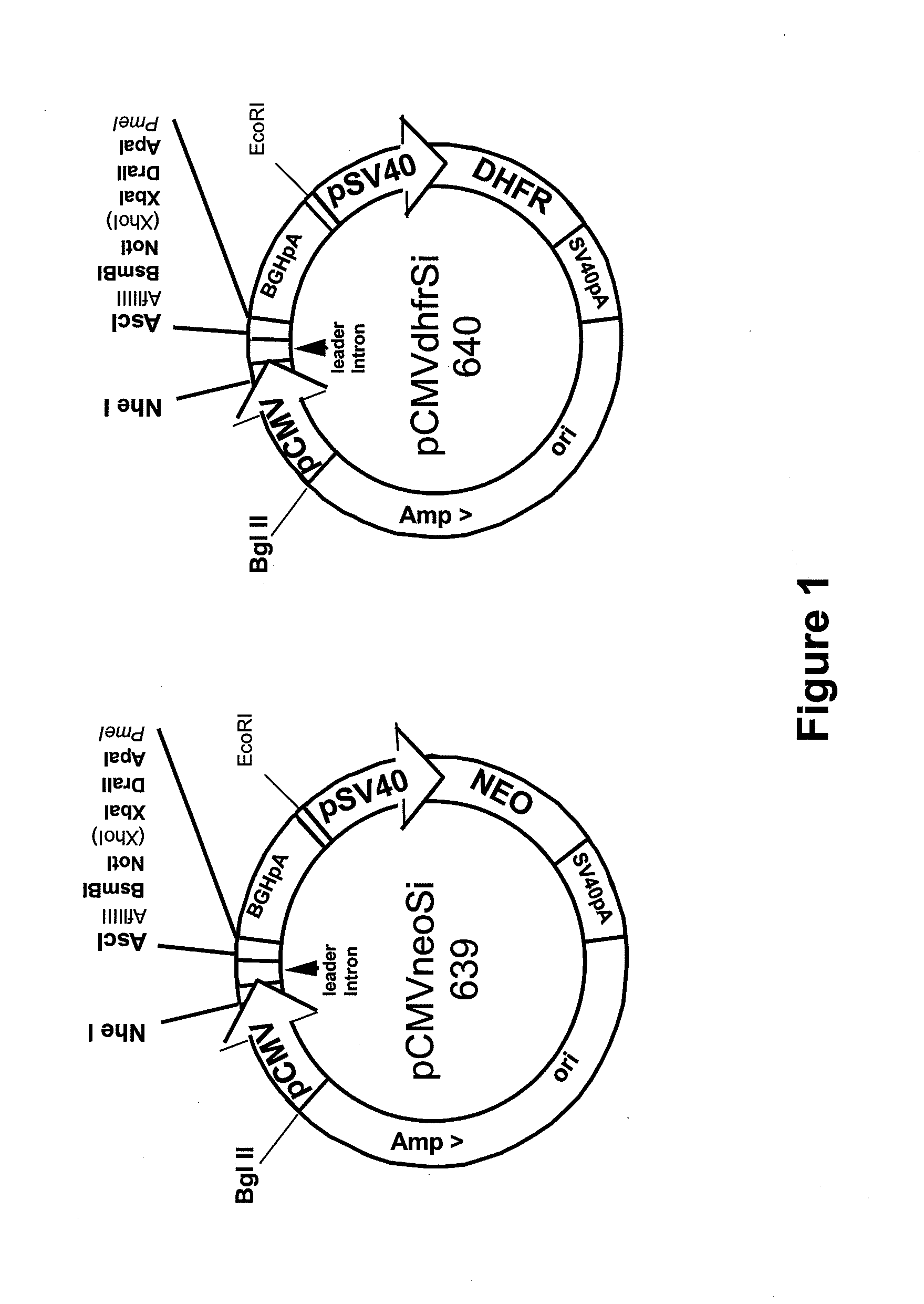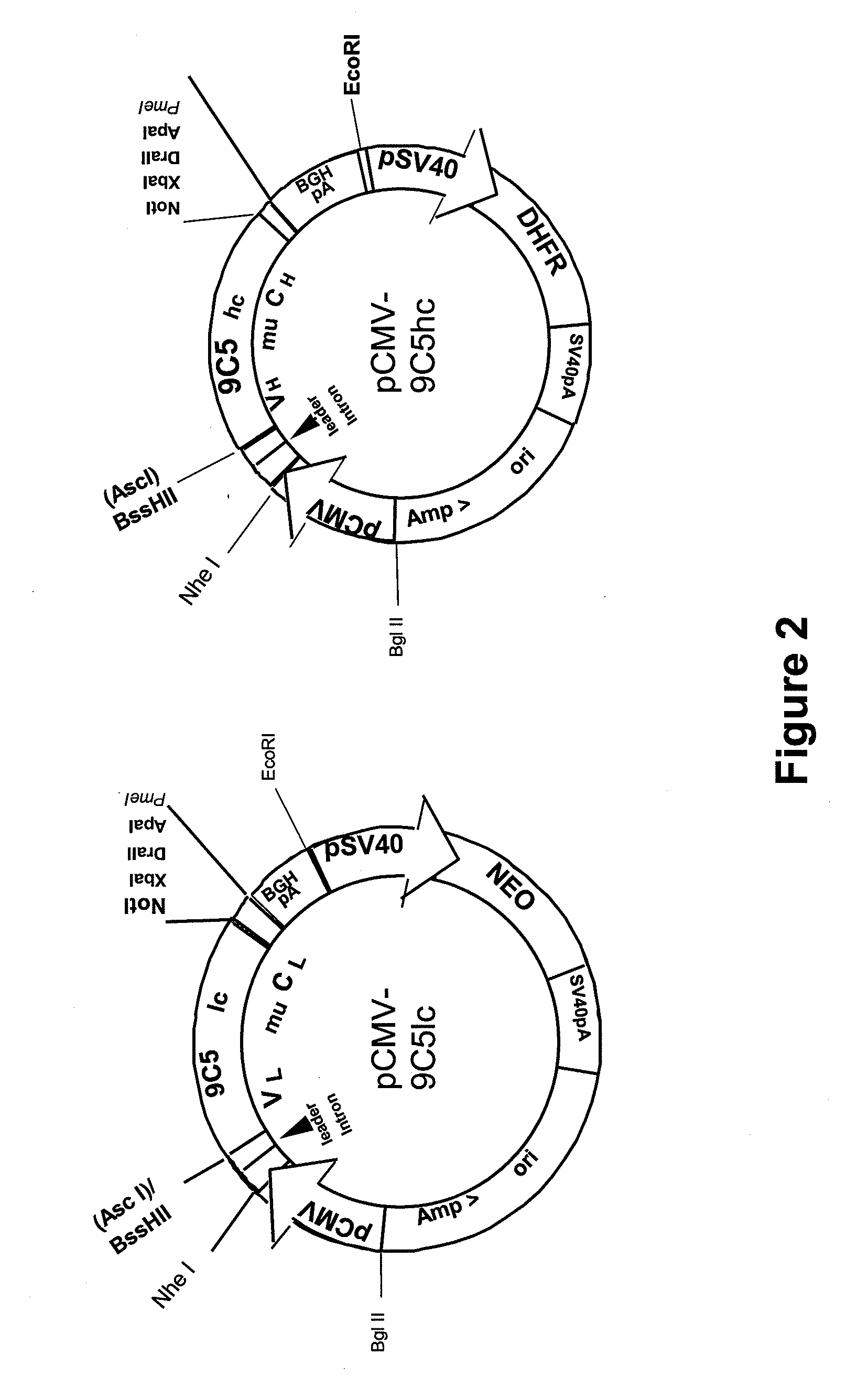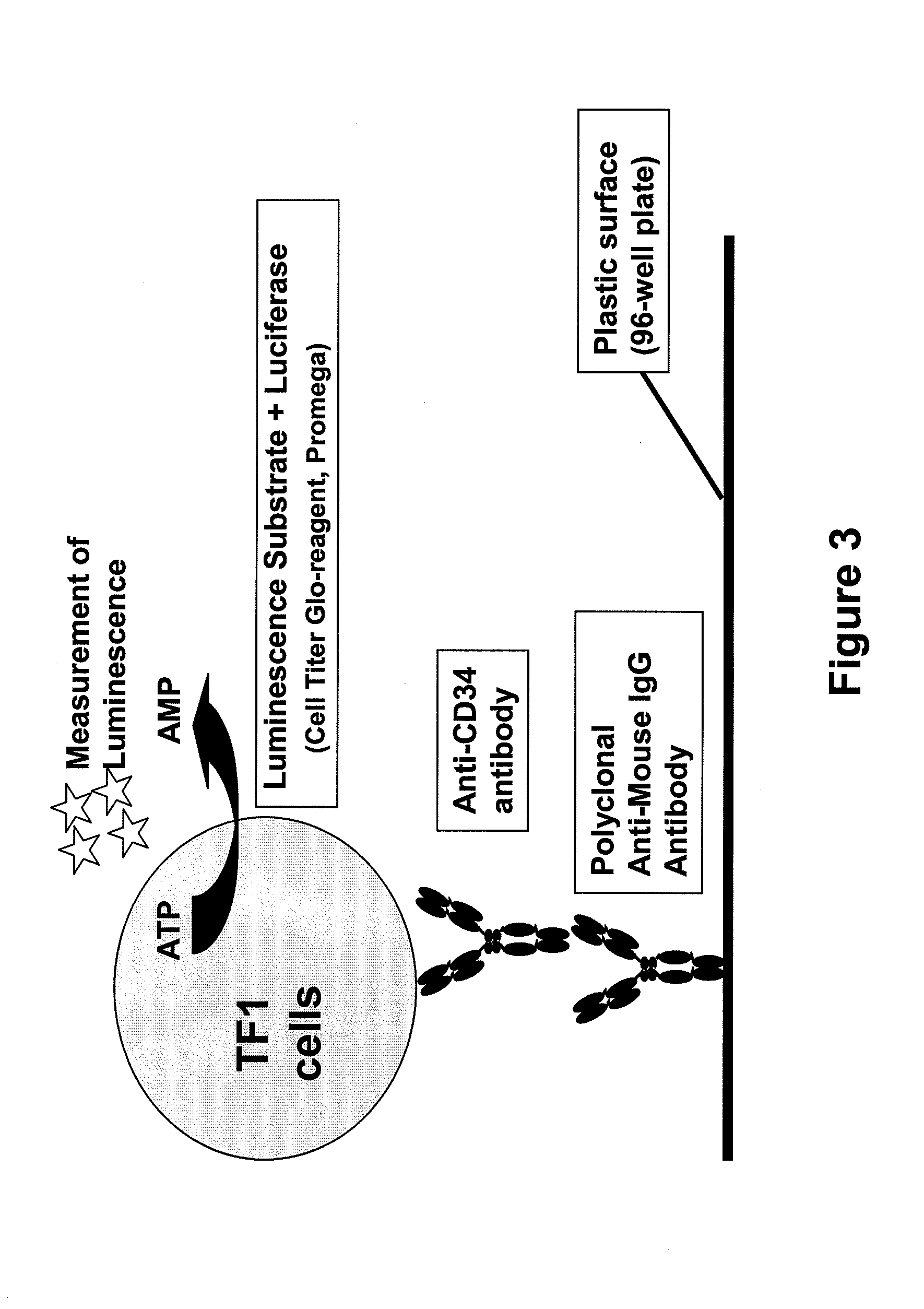Procedure for the generation of a high producer cell line for the expression of a recombinant Anti-CD34 antibody
a cell line and recombinant technology, applied in the field of high producer cell line for the expression of a recombinant anticd34 antibody, can solve the problems of affecting the high-throughput screening of such antibodies, and affecting the high-throughput screening ra
- Summary
- Abstract
- Description
- Claims
- Application Information
AI Technical Summary
Benefits of technology
Problems solved by technology
Method used
Image
Examples
example 1
Sequence Determination and Cloning of the Anti-CD34 Antibody Light and Heavy Chain
[0048]Supernatants of 9C5 / 9069 hybridoma cells expressing anti-CD34 antibody were harvested by centrifugation, sterile filtered (Nalge Nunc, Graz, Austria) and purified by affinity chromatography on a protein G sepharose column (Amersham Biosciences, Vienna, Austria). The antibody was eluted from the column by a glycine buffer (Merck, Vienna, Austria) pH 2.8. Fractions containing the purified antibody were pooled, and dialyzed against PBS pH 7.2-7.4. The N-terminal amino acids of the heavy and light chains of the purified antibody were sequenced according to standard protocols.
[0049]Total RNA was isolated from hybridoma cells using the TRIzol Reagent (Sigma-Aldrich, Vienna, Austria) according to standard protocols. The RNA was used for synthesis of cDNA applying the Ready-To-Go™-you-Prime First-Strand Beads Kit (Amersham Biosciences) according to the manufacturer's instructions. The cDNA was then used ...
example 2
Development of the Cell Capture Assay
[0053]96-well microplates (Maxisorp, Nalge Nunc) were coated with polyclonal anti-mouse IgG antibody developed in goats (Jackson Immuno Research, Suffolk, UK) or in sheep (Baxter Oncology, Halle, Germany). After washing with PBS, either conditioned medium containing the anti-CD34 antibody was added and incubated overnight at 4° C. or purified antibody was diluted in DMEM medium (Invitrogen / Gibco, Lofer, Austria) supplemented with 10% FCS (PAA Laboratories, Pasching, Austria) and 1% penicillin / streptomycin (Invitrogen / Gibco) prior to incubation. Subsequently, plates were washed with PBS and TF-1 cells (ATCC CRL-2003) were added at a cell density of 1×105 cells / mL. TF-1 cells were cultivated in RPMI medium (Invitrogen / Gibco). The bound anti-CD34 antibody captures the TF-1 cells by binding to the CD34 present on the surface of the cells. After washing steps to remove the unbound cells, the Cell Titer-Glo reagent from the CellTiter-Glo Luminescent Ce...
example 3
Cell Capture Assay for Testing Anti-CD34 Antibodies Transiently Expressed in HEK293T Cells
[0054]HEK293T cells (GenHunter, Nashville, USA) were propagated in DMEM medium (Invitrogen / Gibco), supplemented with 0.1% Gentamycin, 1% MEM non-essential amino acids, 1% antibiotic / antimycotic and 10% FBS (all Invitrogen / Gibco).
[0055]Transient transfection with pCMV-9C51c and pCMV-9C5hc was carried out using GeneJuice (Merck / Novagen) according to the instructions of the manufacturer with four different light chain vector preparations in combination with one heavy chain vector preparation. As negative controls, the heavy chain vector and the light chain vector were transfected separately. Transfected cells were incubated up to three weeks after transfection. The conditioned medium was harvested after 3 days of incubation and replaced by fresh medium.
[0056]The expression of mouse IgG was first verified by the Easy Titer Mouse IgG Assay (Pierce) according to the manufacturer's instructions. To te...
PUM
| Property | Measurement | Unit |
|---|---|---|
| pH | aaaaa | aaaaa |
| OD | aaaaa | aaaaa |
| concentration | aaaaa | aaaaa |
Abstract
Description
Claims
Application Information
 Login to View More
Login to View More - R&D
- Intellectual Property
- Life Sciences
- Materials
- Tech Scout
- Unparalleled Data Quality
- Higher Quality Content
- 60% Fewer Hallucinations
Browse by: Latest US Patents, China's latest patents, Technical Efficacy Thesaurus, Application Domain, Technology Topic, Popular Technical Reports.
© 2025 PatSnap. All rights reserved.Legal|Privacy policy|Modern Slavery Act Transparency Statement|Sitemap|About US| Contact US: help@patsnap.com



